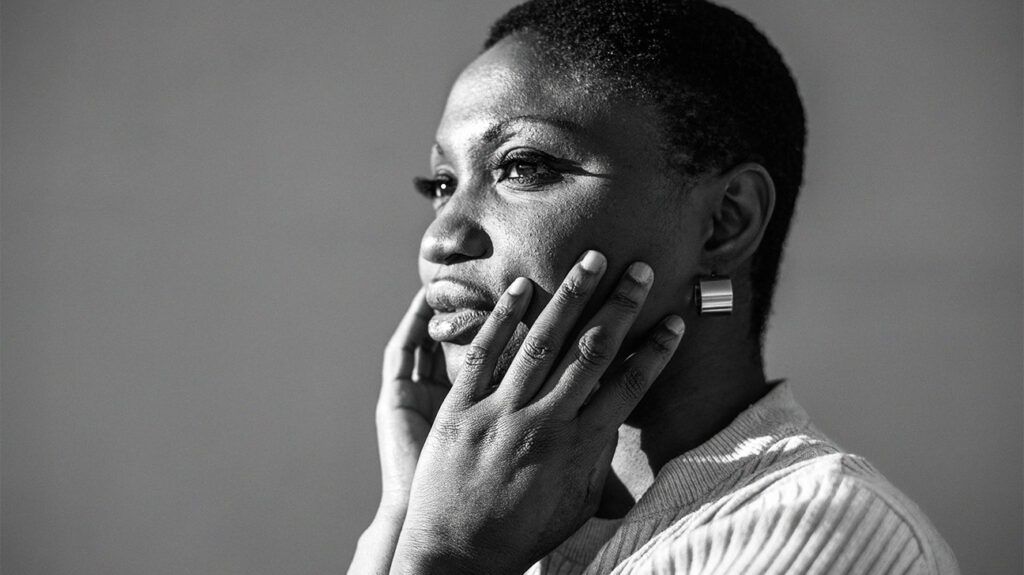Anxiety can cause many symptoms, including jaw tension. Exercises, mouthguards, and behavior changes can help relieve tension, but addressing the underlying causes of anxiety may help prevent it.
There is little research on how to relieve or prevent jaw tension, but a lot of scientific research is available on preventing and treating anxiety disorders.
This article explores the link between jaw tension and anxiety. It also discusses the symptoms of these conditions, their management, and prevention.

Anxiety disorders range from specific phobias to generalized anxiety disorder (GAD).
Healthcare professionals
Someone with an anxiety disorder will experience this mood under inappropriate circumstances. This might involve overestimating the likelihood or severity of a perceived threat, leading to unhelpful thoughts, feelings, or behaviors.
Anxiety can produce a range of symptoms. There is some scientific evidence that jaw tension, which arises when a person’s jaw muscles contract excessively, could be a symptom.
For instance, a
The authors concluded that there is a clear association between higher self-reported anxiety levels and increased tension in the masseter muscles.
Anxiety can feel different for different people. However, some symptoms, including those resulting from jaw tension, are more common than others.
Jaw tension symptoms
A
- pain in the jaw or teeth
- grinding the teeth when asleep or awake
- clenching the teeth
- holding the jaw forward or to the side
- biting objects for extended periods
Anxiety symptoms
Aside from jaw tension and tension in other parts of the body, anxiety disorders have various cognitive and physical symptoms. A
- fears, such as a fear of dying
- fatigue
- lack of attention or concentration
- hypervigilance
- speech difficulties
- increased heart rate
- shortness of breath
- rapid breathing
- a feeling of dizziness or lightheadedness
- nervousness
- impatience
Anxiety can also manifest in behavioral symptoms. These might include avoidance behaviors, which arise when a person tries to avoid anxiety triggers. They could also include restlessness, hyperventilation, and seeking reassurance.
There is limited research into the benefits of muscle exercises to relieve jaw tension. However, there is anecdotal evidence that certain facial stretches could help.
These include performing slow, controlled mouth movements, such as opening and closing the jaw or moving it from side to side. Some people might also use their hands, massaging the tense parts of their jaw.
The following jaw stretches may help relieve a tight jaw:
Relaxed jaw stretch
- Rest the tip of the tongue behind the upper front teeth.
- Lower the bottom jaw so the lower teeth come away from the upper teeth.
- Remember to keep the jaw muscles relaxed.
Goldfish exercise
- Press the tongue against the roof of the mouth.
- Place one index finger on the chin and the other on the temporomandibular joint, which connects the lower jaw to the skull.
- Lower the bottom jaw as far as possible.
- Close the mouth and repeat.
Resistance mouth opening
- Hold the tip of the chin in the right hand with the thumb resting under the chin and the index finger wrapped around the front.
- Softly push the right hand against the jaw.
- Slowly start to open the jaw while continuing to push against the chin.
- Hold the position for a few seconds, then slowly close the mouth.
If jaw tension arises due to anxiety, healthcare professionals may recommend addressing the anxiety before addressing the jaw tension.
It may also be possible to relieve anxiety or jaw tension in the following ways:
Relieving anxiety
According to the
- Exercise: There is
evidence that regular exercise can help people manage anxiety symptoms. High intensity exercise may be particularly beneficial, although low intensity workouts can also help. - Avoiding recreational substance misuse: People should limit or avoid smoking, caffeine, alcohol, and recreational drugs.
- Psychotherapy: Psychotherapy and counseling can be effective in treating anxiety. Examples include cognitive behavioral therapy (CBT) and acceptance and commitment therapy (ACT).
- Meditation and other relaxation techniques: Relaxation and meditation techniques may be helpful in relieving anxiety. Examples include yoga and mindfulness.
- Medication: Medication can help relieve symptoms and support the treatment of anxiety. Doctors may prescribe antidepressants, such as selective serotonin reuptake inhibitors (SSRIs) and serotonin and norepinephrine reuptake inhibitors (SNRIs), anti-anxiety medication such as benzodiazepine, and beta-blockers.
- Joining a support group: Some people may find it helpful to join a support group, where they can share experiences with other people with anxiety.
Learn more about treatments for anxiety.
Relieving jaw tension
There is little research into treatments for relieving jaw tension.
In addition to the facial exercises above, the following methods may help a person stop grinding their teeth:
- Behavioral changes: People can learn how to hold their tongue, teeth, and lips properly to release tension in the jaw. This typically involves resting the tongue upward to relieve jaw discomfort while keeping the teeth apart and the lips closed.
- Mouthguard: A person can wear a mouthguard during the day or night to protect the teeth and minimize the effects of teeth grinding.
- Biofeedback therapy: Biofeedback involves using an electrical instrument to measure the extent of the muscle activity in the mouth and jaw. It can increase awareness of involuntary bodily functions and help people take steps to control that behavior.
Anyone experiencing symptoms of anxiety or jaw tension may wish to talk with a doctor. The doctor can help determine the underlying cause and recommend treatment.
Anxiety manifests in highly varied ways. Research indicates that anxiety can lead to muscular tension, including within the jaw muscles. This jaw tension can be uncomfortable or painful.
The treatments for jaw tension and anxiety include talk therapy, medication, and exercise, as well as specific stretches to relieve pain and tightness in the jaw.
